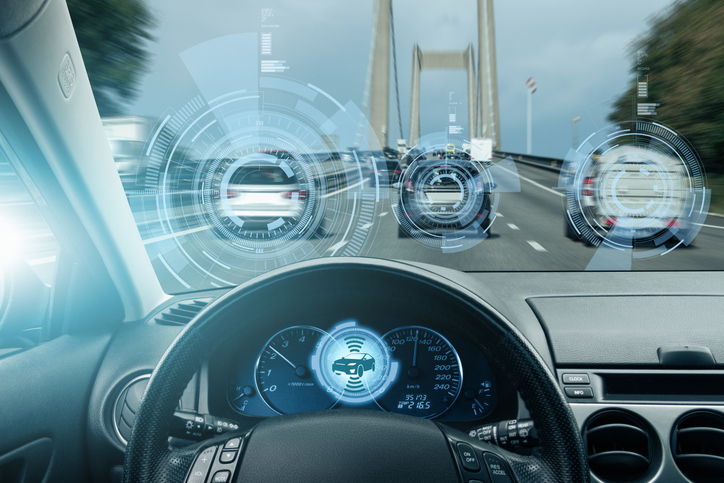Mobility Committee Laments State Law Curtailing City’s Power Over Driverless Car Companies
Safety Info November 8, 2023 0 COMMENTS
According to City Council members, there’s a growing concern about public safety regarding the emerging autonomous or driverless vehicles in Austin. Last week, the Mobility Committee received information from the staffs of the Transportation and Public Works Department and the Public Safety Departments highlighting the need to improve the safety and operations of four AV companies operating currently in Austin.
Read on to delve into the tussle of the mobility committee with the state to tackle the issues arising due to driverless cars.
The city of Austin has been monitoring and keeping a check on the technology since 2017. However, a state law was passed in the same year. This enactment prevented the city from regulating the movements of the AV companies or geofence certain zones to control the access of vehicles that operate as autonomous or driverless.
There have been several instances wherein the traffic rules were violated by driverless taxis. Members of the Austin Police Department and the Austin Fire Department reported occasions when these vehicles didn’t follow the traffic signals or objected the authorities to entering the vehicle to investigate. In one of the instances, the car disallowed access to a Fire Department member and took control manually, even though it was agreed to do so in cases of emergency.
Another example is that cited by AFD Battalion Chief Matt Holmes, who mentions two incidents when an autonomous vehicle continued flashing lights on a fire truck, resulting in difficulty for the truck to move into the fire station.
“It would actually come closer and closer and closer to the firetruck, within I’d say less than 5 feet, even with firefighters standing there trying to use hand signals to stop,” Holmes said. “So we’re kind of stopped, still stuck out in traffic with lights on, and then the vehicle just decides to immediately just go around (the truck) for whatever reason.”
Yet another instance was when Cruise, a leading AV company in the U.S. announced its plans to stop its operations. The goal was to address the public safety concerns that had resulted in California authorities revoking the company’s license to operate. In the discussion, the committee members expressed disgust at being unable to control the movements of Cruise or other such AV companies in the streets of Austin, due to lack of requisite legal powers. To obtain a more in-depth legal opinion in this regard, you may reach out to an Albany GA car accident lawyer.
“I’ve said from the beginning that I don’t think this technology is ready for prime time. And by their own operations, they were avoiding larger streets, maintaining a smaller footprint staying away from special events with higher volumes of traffic, and also reducing services during inclement weather. That tells us the company didn’t have enough faith in their own technology,” Council Member Zo Qadri said. “It’s unfortunate that state law doesn’t allow us to regulate this unproven technology.”
The authorities were a little skeptical about the effectiveness of the technology. To study its impact on various areas of Austin, the city council extracted data from different yet reliable sources. The data compiled from sources like 311 and camera footage mainly showed that most issues relating to handling AV traffic existed in the parts of Red River Street, West Campus, Martin Luther King Boulevard, and the area around Austin Fire Station No.2.
Before the company came up with its announcement on halting its operations in the state temporarily, Cruise made a presentation at the Downtown Commission. This showcased the various measures the company was taking to address public safety concerns and ways to avoid situations like the one in a viral video, wherein around a dozen Cruise autonomous vehicles were struggling to move effectively, causing traffic congestion in the area.
“We’ve seen videos on social media of their cars malfunctioning, causing traffic problems and a lack of immediate solutions, and it’s important for autonomous vehicle companies to realize that these driverless cars can be dangerous and that our public roads should not be a test playground,” Mayor Pro Tem Paige Ellis said. “We should not be treated like guinea pigs with limited state regulations in place. It’s important we identify ways for autonomous vehicle providers to be held accountable for malfunctions that threaten motorists, pedestrians, cyclists, or slow down our public safety responders.”
RELATED ARTICLES
Recent Posts
- Major Theft Ring Busted: Over $200,000 in Stolen Lego Sets Recovered in Eugene, Oregon
- Judge Denies Texas’ Bid to Shut Down Migrant Shelter Network in El Paso
- Single Mother in Memphis Seeks Help for Troubled Son Amid Rising Concerns
- California’s Proposition 47 Reform Sparks Intense Political Debate Over Public Safety
- U.S. Man’s Social Security Benefits Denied Over Citizenship Confusion
Categories
Our Supporters
Gold Supporters
Christopher Simon – Atlanta Truck Accident Lawyer
Skiver Law Firm – Phoenix Truck Accident Lawyer
Winer, Burritt & Scott, LLP – Los Angeles Clergy Abuse Law Firm
Michael E. Fenimore P.A. – Pensacola Car Accident Lawyer
Pillsbury & Coleman, LLP – San Mateo Long Term Disability Lawyer
The Law Office of Randall J. Wolfe, P.C. – Oregon City Personal Injury Lawyer
Davies Hothem Injury Law – Buford, GA Car Accident Attorney
Houston Federal Criminal Defense Attorney
Darrow Law Firm – Houston Federal Crime Lawyer
Kansas City Personal Injury Lawyer
Atlanta Truck Accident Attorney
Aitken *Aitken* Cohn Trial Lawyers – Santa Ana Personal Injury Attorneys
Dawson Law Group- Portland Personal Injury Attorneys
CT Mediation Center- New Haven Family Law Attorney
Little Rock Personal Injury Lawyer
Katy Car Accident Lawyer
Franklin Divorce Attorney
Palermo Law- Long Island Personal Injury Lawyer
Dan Rose – San Francisco Car Accident Attorney
Taylor Siemens – Liberty, MO Personal Injury Attorneys
Pfeifer Law Firm – Little Rock Car Accident Lawyer
Walkup, Melodia, Kelly & Schoenberger – San Jose Car Accident Attorney
Solomon, Dwiggins, Freer & Steadman – Las Vegas Business Litigation Lawyer
Roane Law – Asheboro NC Car Accident Lawyer
Dorsch Law Firm – Overland Park Estate Planning Attorney
The Tennessee Sledgehammer – Hermitage, TN Car Accident Lawyer
Cook Law Group – Gainesville, GA Car Accident Lawyer
Simon Bridgers Spires – Atlanta Personal Injury Lawyer
Injury Law Associates – Kansas City Motorcycle Accident Lawyer
Potts & Potts – Honolulu Personal Injury Attorney
